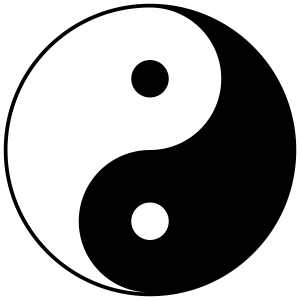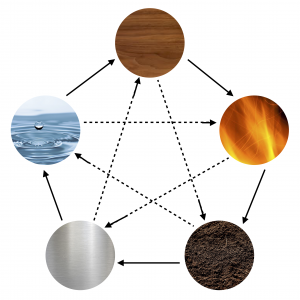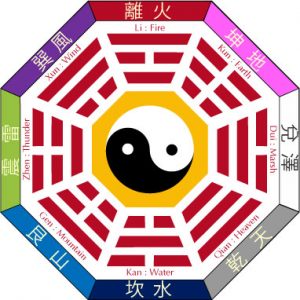3 Styles of Acupuncture – Endless Benefits
If you’ve been watching our Tuesdays with Tamara Live Videos on Facebook, then you’ve probably heard Tamara refer to different styles of acupuncture: TCM, Five Element, and Balance Method. In case you’re scratching your head wondering what this is all about, we wanted to take a moment to cover this a bit more in-depth. So let’s dig in!
First, a (very) brief history of acupuncture:
As you may know, acupuncture has been around for thousands of years – in fact, there is historical evidence of its use dating all the way back to 6000 BCE! The most widely cited seminal text used for TCM and acupuncture is the Huangdi Neijing or The Yellow Emperor’s Classic of Internal Medicine, which dates to 100 BCE. This ancient tome lays out the organized system of diagnosis and treatment of health imbalances that evolved into acupuncture as we know it today. It details how the flow of qi, or life energy, is channeled throughout the body, connecting everything within it, which led to the development of the anatomical points on the meridian system that we now call acupuncture points. The text also details the healing techniques of massage, herbal medicine and Qigong. And thus the foundation of Traditional Chinese Medicine was established.
TCM Acupuncture
Over the centuries since its inception, Traditional Chinese Medicine has continually evolved, becoming better and more powerful with each new advance. The traditional acupuncture performed by TCM practitioners today reaches all the way back to these ancient roots, while benefiting from the myriad refinements that have been made throughout the years. The basis for this medicine is the meridian system as expounded upon in The Yellow Emperor’s Classic of Internal Medicine. By placing the tiny, hair-like acupuncture needles in specific, strategic points along the body’s meridians, the TCM practitioner can manipulate the flow of qi in order to have a therapeutic effect on the body. With each treatment, the body’s natural self-healing process is triggered, accelerating one’s progress. The ultimate goal is to balance the mind and body to create harmony and holistic health. The primary theoretical aspects behind the TCM approach include: Essential Qi, Yin-Yang, and the Five Elements. Describing these could take a whole book in of itself, but here is a brief explanation of each to provide a basic understanding:
- Essential Qi refers to the life force energy that composes everything, “the primordial matter of all things between heaven and earth.” The movement of Essential Qi creates the universe, which itself is the result of the interaction of yin (the qi of heaven) with yang (the qi of earth).
- Yin & Yang are two fundamental, polar forces that organize the universe. You’ve probably seen the Yin-Yang symbol decorating all manner of spaces, but if you study the image, you will see it perfectly represents the constant interplay of the two forces and how they balance and encompass each other.
 These same forces that move through and comprise the universe exist within each and every living thing, including humans. When they are out of balance in the body, this weakens or disrupts the flow of qi and leads to ill health.
These same forces that move through and comprise the universe exist within each and every living thing, including humans. When they are out of balance in the body, this weakens or disrupts the flow of qi and leads to ill health.
- The Five Elements and how they work in the body can seem esoteric or difficult to grasp at first, especially if we confuse them with our common usage of the word “element” in the West. Unlike the materials on the Periodic Table, the elements of TCM actually represent fundamental processes, functions or patterns. The Five Elements – Wood, Fire, Earth, Metal & Water – correspond to different aspects of nature and the body, each correlating to a natural season, a bodily organ, an emotion – even a certain taste and color. Understanding the Five Elements and how they relate to the inner workings of the body helps the practitioner to identify patterns of disharmony that result in deterioration of health.
With a deep understanding of all the above, the TCM practitioner evaluates the patient through a series of assessment tools, including tongue analysis and pulse diagnosis. Upon examination, the practitioner comes to understand the underlying imbalances that have resulted in the patient’s health condition and then creates a treatment strategy – often a combination of acupuncture and herbs, as well as other techniques – to address and correct them.
5 Element Acupuncture
If you’ve ever come across an online quiz to help you identify which Chinese Element you are, then you already know each person tends to be affected by their “ruling” element more than the others. What you may not know is that your particular element not only affects the expression of your personality, but also your emotions, your health and even the way you respond to treatment. Building upon the foundations provided by TCM, J.R. Worsley developed Five Element Acupuncture over decades of clinical study and practice.
 The focus in this style is on rooting out the Causative Factor or Element that has created imbalance on an emotional, physical and/or spiritual level in order to bring about transformational healing. As renowned Five Element acupuncturist and teacher Lonny Jarrett puts it, “the highest aspect of healing involves assisting the patient in fulfilling their individual destiny, in other words, helping them recognise their inner nature and empowering them to then take action consistent with this truth.” He goes on to say “Healing is complete only when the mind is able to spontaneously acknowledge and act upon the truth within. It may be said that this experience of ‘intimacy with one’s true self’ is the first step in the fulfillment of individual destiny.”
The focus in this style is on rooting out the Causative Factor or Element that has created imbalance on an emotional, physical and/or spiritual level in order to bring about transformational healing. As renowned Five Element acupuncturist and teacher Lonny Jarrett puts it, “the highest aspect of healing involves assisting the patient in fulfilling their individual destiny, in other words, helping them recognise their inner nature and empowering them to then take action consistent with this truth.” He goes on to say “Healing is complete only when the mind is able to spontaneously acknowledge and act upon the truth within. It may be said that this experience of ‘intimacy with one’s true self’ is the first step in the fulfillment of individual destiny.”
In order to ascertain the Causative Factor – or CF – the Five Element Acupuncturist makes a thorough assessment through questioning, listening and observing. This method of triage results in a sorting of symptoms into primary and secondary statuses, thereby allowing the practitioner to determine the CF and proceed with a treatment strategy that not only addresses physical symptoms, but digs to the root mental/emotional and spiritual events or traumas that are contributing to the patient’s ill health.
In this way, Five Element emphasizes the importance of self-understanding and exploration in order to pave the way toward positive transformation.
Balance Method
This style, originally developed by Dr. Richard Tan, brings a unique approach to acupuncture with a perspective rooted in the Taoist concept of the Bagua. If you have ever explored Feng Shui, you are likely familiar with its symbol, or some version of it. The Yin-Yang at the center of the Bagua represents one’s physical, mental/emotional and spiritual health. The center touches every aspect of one’s life, making it of prime importance – when you are centered within yourself, this balance and groundedness permeates everything you do, rendering you better able to make good decisions for your life and your health. Reaching this level of optimal health at the core of one’s being radiates
 wellbeing to all areas: relationships, finances, community, creativity, career, etc. In fact, the eight sides of the Bagua represent eight different areas of life and the aim is to balance them all in equal measure.
wellbeing to all areas: relationships, finances, community, creativity, career, etc. In fact, the eight sides of the Bagua represent eight different areas of life and the aim is to balance them all in equal measure.
Everything in the body and in nature is inter-connected. The Bagua philosophy used in Balance Method is a precise way of examining those connections and pinpointing where energetic blockages are preventing or disrupting one’s overall balance and health. The Balance Method practitioner is an expert in assessing all these energetic relationships in order to ignite health and vitality, which often results in accelerated healing for the patient – often through the use of both acupuncture and herbs.
Wrapping Up
While we cannot cover every facet of the theories and philosophies that make these methods of acupuncture so powerful and effective in a blog post, we hope this overview has provided a basic foundation of understanding. Our goal, as always, is to empower each and every patient to take charge of their own lives, bodies and healing in order to live full, vibrant lives. In our experience, all of the methods described above have their time and place and contribute to health and harmony. Our clinic owner, Tamara, in particular, is trained in all of the above methods and uses them in conjunction with each other, sharing her expertise with not only her patients but all our TCM practitioners as well.
To learn more about how TCM and acupuncture can benefit you, give us a call or book online today!
Sources:
- Xue-sheng, Z. Chinese Medicine Study Guide: Fundamentals. People’s Medical Publishing House, 2007.
- Harriet Beinfield, L.Ac. and Efrem Korngold, L.Ac., O.M.D. Between Heaven and Earth: A Guide to Chinese Medicine. Ballantine Books, 1991.
- Lonny S. Jarrett. “Chinese Medicine and the Betrayal of Intimacy: The Theory and Treatment of Abuse, Incest, Rape and Divorce with Acupuncture and Herbs, Part I.” American Journal of Acupuncture, Vol. 23, #1, 1995.

